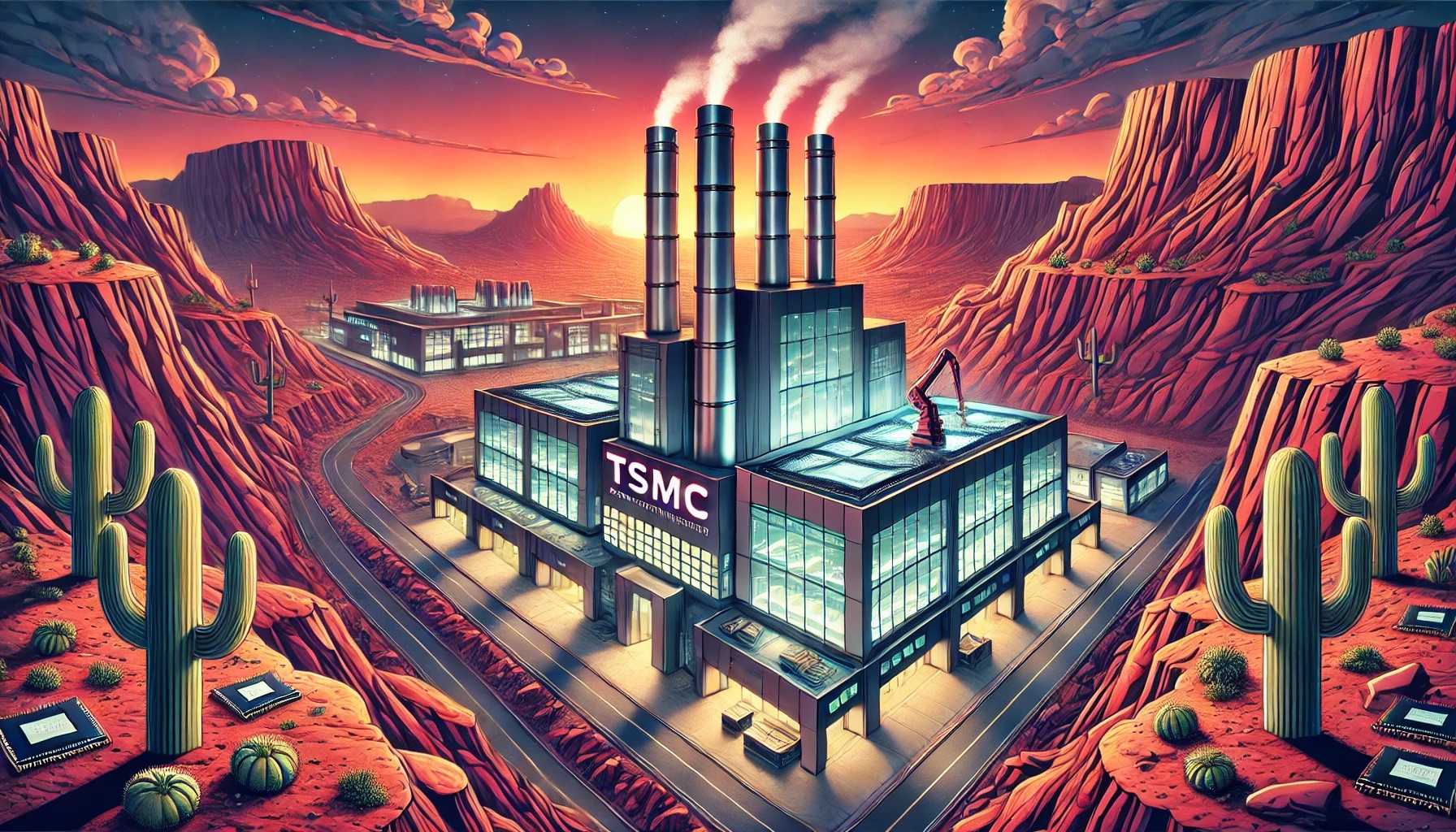TSMC's Arizona facility is set to begin 4nm chip production in 2025, producing 20,000 wafers monthly. Despite its pivotal role in the US semiconductor industry, costs are expected to be 30% higher than in Taiwan, raising concerns for major clients like Apple and Nvidia.
Arizona Facility Signals TSMC's Global Expansion
Next year, TSMC's Arizona factory will begin manufacturing. A lot has changed for the Taiwanese behemoth since the passing of the CHIPS Act, including TSMC's construction of one of the largest overseas facilities.
According to a source from Yonhap, a Korean media outlet, TSMC's 4nm process would reportedly be manufactured at their Arizona facility in the Phase 1 (1A) plant region. However, clients in the US should be aware that production prices in Arizona are projected to be 30% more than in Taiwan.
Major Tech Companies Among Key Clients
The Arizona factory is said to have an initial monthly wafer production capacity of 20,000 units, with Apple, Nvidia, AMD, and Qualcomm being the main customers, according to the article.
In Phase 2, TSMC intends to mass-produce 2 nm in 2028, however this is currently uncertain, particularly in light of the difficulties surrounding "technology transfer" between the US and Taiwan. Despite rumors that the facility will be in charge of 4 nm manufacturing, this is only a Phase 1 plan.
Arizona's Higher Production Costs Raise Concerns
The fact that customers will allegedly pay substantially extra to have TSMC's products made at their Arizona factory rather than imported from Taiwan is another intriguing aspect brought up here.
Rumor has said that TSMC's Arizona production costs will be 30% higher than expected, WCCFTECH shares. This is supposedly because the US is lacking on semiconductor supply chains and ingredients needed to stabilize process yield rates.
When major IT companies begin buying from TSMC Arizona, the prices they pay can end up reflecting in the prices consumers pay for their products.
Despite the Trump administration's disapproval of TSMC's domestic operations, the company will remain an important player in the future of the US semiconductor industry.



 Singapore Growth Outlook Brightens for 2025 as Economists Flag AI and Geopolitical Risks
Singapore Growth Outlook Brightens for 2025 as Economists Flag AI and Geopolitical Risks  Asian Fund Managers Turn More Optimistic on Growth but Curb Equity Return Expectations: BofA Survey
Asian Fund Managers Turn More Optimistic on Growth but Curb Equity Return Expectations: BofA Survey  Japan Exports to U.S. Rebound in November as Tariff Impact Eases, Boosting BOJ Rate Hike Expectations
Japan Exports to U.S. Rebound in November as Tariff Impact Eases, Boosting BOJ Rate Hike Expectations  OpenAI Explores Massive Funding Round at $750 Billion Valuation
OpenAI Explores Massive Funding Round at $750 Billion Valuation  Trump Signs Executive Order to Establish National AI Regulation Standard
Trump Signs Executive Order to Establish National AI Regulation Standard  Asian Currencies Trade Sideways as Dollar Weakens Ahead of Key U.S. Data
Asian Currencies Trade Sideways as Dollar Weakens Ahead of Key U.S. Data  Asian Stocks Edge Higher as Tech Recovers, U.S. Economic Uncertainty Caps Gains
Asian Stocks Edge Higher as Tech Recovers, U.S. Economic Uncertainty Caps Gains  U.S. Stock Futures Edge Higher as Micron Earnings Boost AI Sentiment Ahead of CPI Data
U.S. Stock Futures Edge Higher as Micron Earnings Boost AI Sentiment Ahead of CPI Data  Oil Prices Slip in Asia as 2026 Supply Glut Fears and Russia-Ukraine Talks Weigh on Markets
Oil Prices Slip in Asia as 2026 Supply Glut Fears and Russia-Ukraine Talks Weigh on Markets  Asian Stocks Slide as AI Valuation Fears and BOJ Uncertainty Weigh on Markets
Asian Stocks Slide as AI Valuation Fears and BOJ Uncertainty Weigh on Markets  Asian Currencies Slip as Dollar Strengthens; Indian Rupee Rebounds on Intervention Hopes
Asian Currencies Slip as Dollar Strengthens; Indian Rupee Rebounds on Intervention Hopes  Apple Explores India for iPhone Chip Assembly as Manufacturing Push Accelerates
Apple Explores India for iPhone Chip Assembly as Manufacturing Push Accelerates  BoE Set to Cut Rates as UK Inflation Slows, but Further Easing Likely Limited
BoE Set to Cut Rates as UK Inflation Slows, but Further Easing Likely Limited  MetaX IPO Soars as China’s AI Chip Stocks Ignite Investor Frenzy
MetaX IPO Soars as China’s AI Chip Stocks Ignite Investor Frenzy  SoftBank Shares Slide as Oracle’s AI Spending Plans Fuel Market Jitters
SoftBank Shares Slide as Oracle’s AI Spending Plans Fuel Market Jitters  Oil Prices Climb on Venezuela Blockade, Russia Sanctions Fears, and Supply Risks
Oil Prices Climb on Venezuela Blockade, Russia Sanctions Fears, and Supply Risks  Asian Stocks Slide as AI Spending Fears and Global Central Bank Decisions Weigh on Markets
Asian Stocks Slide as AI Spending Fears and Global Central Bank Decisions Weigh on Markets 































